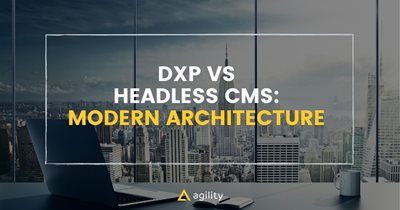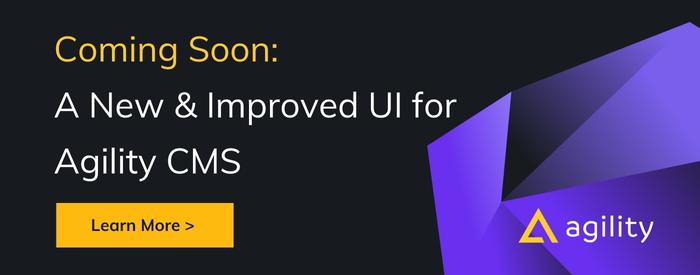DXP, Composable DXP, and MACH Explained
What is DXP, MACH, and Composable DXP?

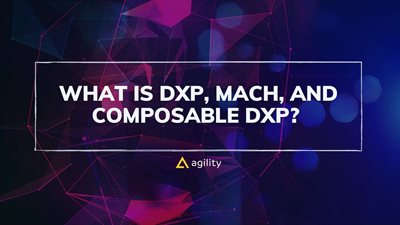
If you’ve been in the content management space for some time, you may be familiar with the extensive terminology and how it all relates to content.
Traditional CMS platforms remained the same as business needs evolved, and many enterprises began adopting headless platforms instead.
For executives considering their next CMS purchase, differentiating between a legacy CMS and a headless CMS has become easier for people outside the industry to grasp. However, we’ve seen new acronyms and concepts appear over the last few months, particularly DXP, MACH, and composability.
So many terms can get confusing. What do they mean? How do they fit together? And where do platforms like Agility CMS see ourselves in all of this? In this article, we’ll help you decipher the differences and similarities between all of these terms so that you can better choose a platform that meets your needs.
What Is a DXP?
A digital experience platform helps businesses that leverage them to create and manage digital experiences. The most commonly referenced definition of a DXP comes from Gartner, who specifies that a DXP is “an integrated set of core technologies that support the composition, management, delivery and optimization of contextualized digital experiences.”
If we break this down, three areas need unpacking:
- What does integrated mean?
- What makes up these core technologies?
- What exactly is a digital experience?
The core technologies in question are the primary tools an enterprise organization uses for daily operations. A CMS to manage content, CRM to store customer data, an eCommerce platform to handle online sales, marketing automation tools to streamline sales and marketing processes, ERP systems, analytics tools, and the list goes on.
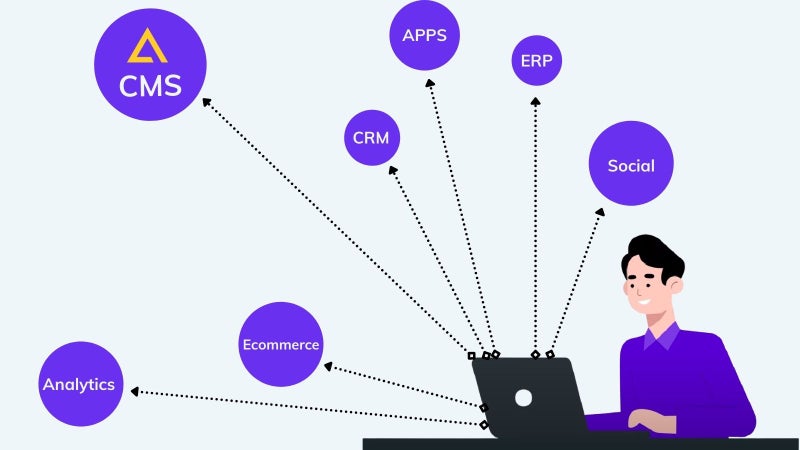
These tools need to be connected together or integrated to get the best out of them. Some platforms combine them into a suite, whereas others leverage APIs and GraphQL to connect them. Finally, digital experiences refer to an interaction between a customer and a business made possible through digital technology. Essentially it relates to interactions across the customer journey any content the customer encounters in the digital space.
What Is a Composable DXP?
Nowadays, DXPs come in two different types, monolithic and composable DXPs. Monolithic DXPs are essentially the legacy all-in-one suite platforms that claim to have everything you need out of the box. However, these platforms tend to be clunky and difficult to manage as they carry way more features than most businesses need.
On the other hand, a composable DXP is a modern DXP that enables businesses to select and integrate best-of-breed technologies as they see fit. This allows you to create a modular tech stack that fits a business’ specific requirements.
Regardless of the type of DXP, a CMS sits at the center of the platform and is usually the primary tool organizations use to create digital experiences. In a monolithic DXP, this CMS will likely be a legacy platform that is tightly integrated with the other tools in the stack. With a composable DXP, the CMS is a headless CMS that facilitates easier integrations using APIs that seamlessly connect to the other software tools.
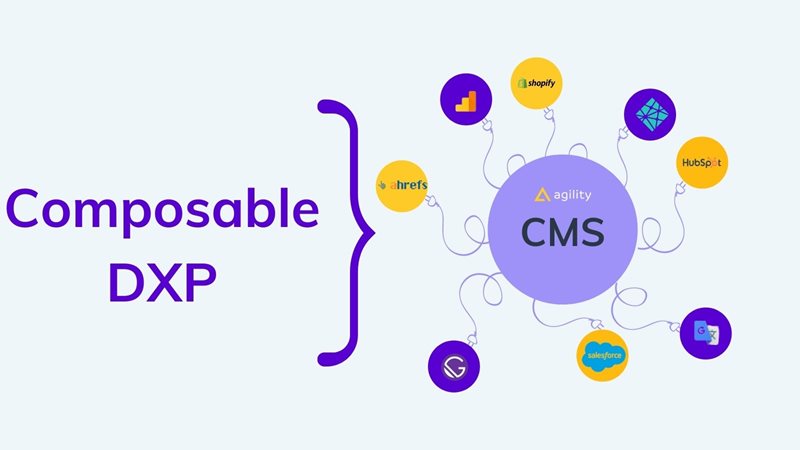
We’ve previously compared a modern DXP to a recipe for your business needs where the different tools are the ingredients you need. That’s precisely what a composable DXP is all about. You can fulfill your business requirements by choosing the right tools for the job, and then you easily swap them out for other tools as technologies change or you need to adapt to changing market trends.
Read More: What Is a Modern Digital Experience Platform (DXP)?
What Is MACH?
MACH is an acronym that stands for Microservices, API-first, Cloud-native, and Headless. When people think of MACH, they generally think of the MACH Alliance, a consortium formed to promote the approach. However, MACH architecture encapsulates the essence of a composable DXP.
Microservices
Applications are individual pieces of business functionality that are independent of each other. As a result, they are developed, deployed, and managed separately rather than together like in a monolithic platform.
API-first
Business functionality gets exposed using APIs that simplify integrations. Here developers aim to make integrations using APIs rather than using orchestration or code-based integrations.
Cloud-native
Applications are deployed in the cloud, which provides storage, hosting, scaling, and automatic updates.
Headless
The front-end presentation layer and back-end database are decoupled from each other, making the platform front-end agnostic so that it can connect to any channel.
Where a Headless CMS Sits
A headless CMS is the centerpiece of everything composable DXP and MACH related, as the headless architecture facilitates these approaches. Decoupling the front-end presentation layer from the back-end storage and content management layer gives more freedom to developers. With this added freedom, they can easily connect to different channels.
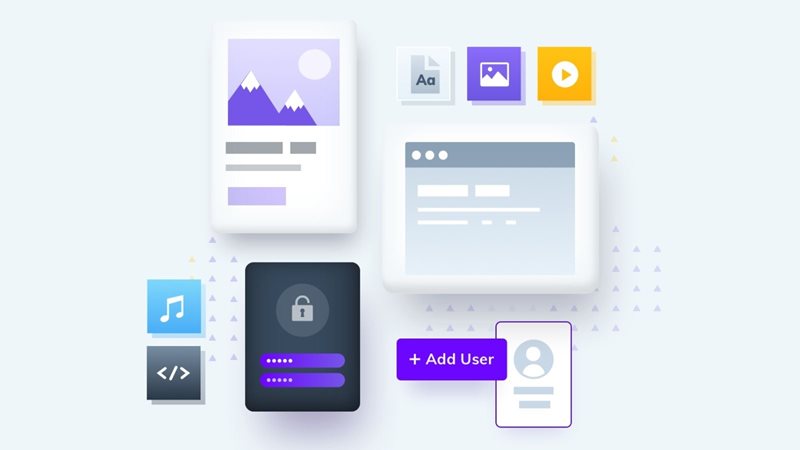
With traditional CMSs, that channel may have been a website, but nowadays, content has to be delivered to mobile applications, AR & VR headsets, digital signs in malls, smartwatches, and a host of other devices. A headless CMS leverages APIs to make these connections instead, giving marketers greater control over where they can deliver content.
Composability and MACH are about being flexible and adaptable, and a headless CMS supports this again by leveraging APIs to make seamless integrations with other tools necessary in the tech stack. Need to connect to a CRM to access customer data? What about marketing automation tools to speed up manual sales processes? Ready to launch an eCommerce store to make products available in multiple locations? All of these capabilities can be integrated with a headless CMS to create a digital experience platform.
Features That Make a Hybrid Headless CMS a Suitable DXP
A hybrid headless CMS includes several beneficial features for both marketers and developers, enabling organizations to avoid choosing between developer flexibility and ease of use for marketers. However, three key features make it the ideal centerpiece for a modern DXP compared to a monolithic CMS or pure headless CMS.
Future-proof Architecture
What happens if the website you built using a legacy CMS suddenly becomes obsolete as your developers have found a new framework that can make your website 25% more responsive and faster? With a hybrid headless CMS, there is no need to fear change as the headless architecture makes your digital experiences future-proof as you can readily embrace new tools and frameworks.

Marketer-friendly Interfaces
A DXP helps organizations create and orchestrate digital experiences. In order to do this, marketers can’t be handicapped by limited content editing capabilities or restrictive content modeling. A hybrid headless provides access to the features they need, including WYSIWYG editing and previews to make creating experiences easier.
Extensible APIs
A DXP integrates all of the core technologies a business needs into one. However, you don’t always want to be locked into the technologies you choose. A better option may show up in a year or two. A hybrid headless CMS provides extensible APIs that make adding more functionality easy so that your business can pick the best ingredients to appeal to your customers.
Agility CMS: A Hybrid DXP for the Modern World
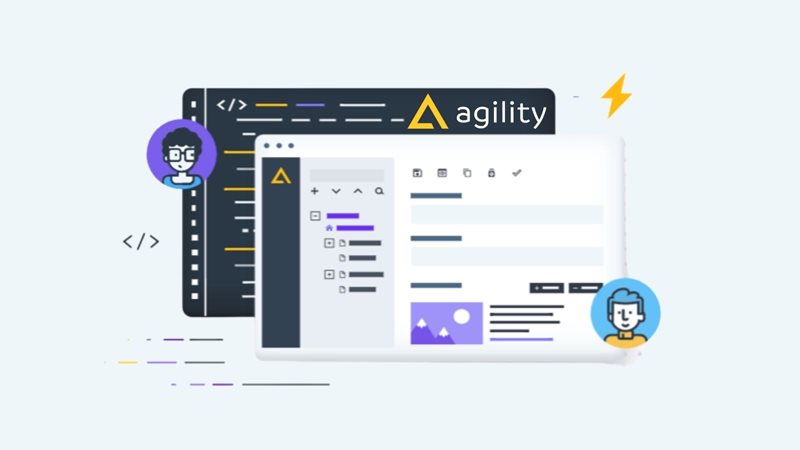
Modern companies need the ability to embrace these latest trends of building digital experiences and composing tech stacks. Agility CMS is an API-first hybrid headless CMS platform that allows you to do just that. Here’s how:
API-first: Agility CMS provides an API-first approach that enables fast and flexible development and gives your business greater control over the tools and technologies you add.
Integrations: Agility CMS features several pre-built integrations that allow you to extend the platform’s user interface, thus making developers’ and marketers’ lives easier.
Marketer-friendly: Agility CMS helps you put your content first with marketer and content editor-friendly features like WYSIWYG editing, sharing, previews, page management, and more.

About the Author
Joel is CTO at Agility. His first job, though, is as a father to 2 amazing humans.
Joining Agility in 2005, he has over 20 years of experience in software development and product management. He embraced cloud technology as a groundbreaking concept over a decade ago, and he continues to help customers adopt new technology with hybrid frameworks and the Jamstack. He holds a degree from The University of Guelph in English and Computer Science. He's led Agility CMS to many awards and accolades during his tenure such as being named the Best Cloud CMS by CMS Critic, as a leader on G2.com for Headless CMS, and a leader in Customer Experience on Gartner Peer Insights.
As CTO, Joel oversees the Product team, as well as working closely with the Growth and Customer Success teams. When he's not kicking butt with Agility, Joel coaches high-school football and directs musical theatre. Learn more about Joel HERE.
View Related Resources

The Digital Experience Platform and its Alternatives: Why Are Monolith DXPs Not The Answer?
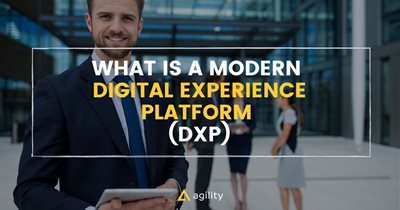
What Is a Modern Digital Experience Platform (DXP)?
